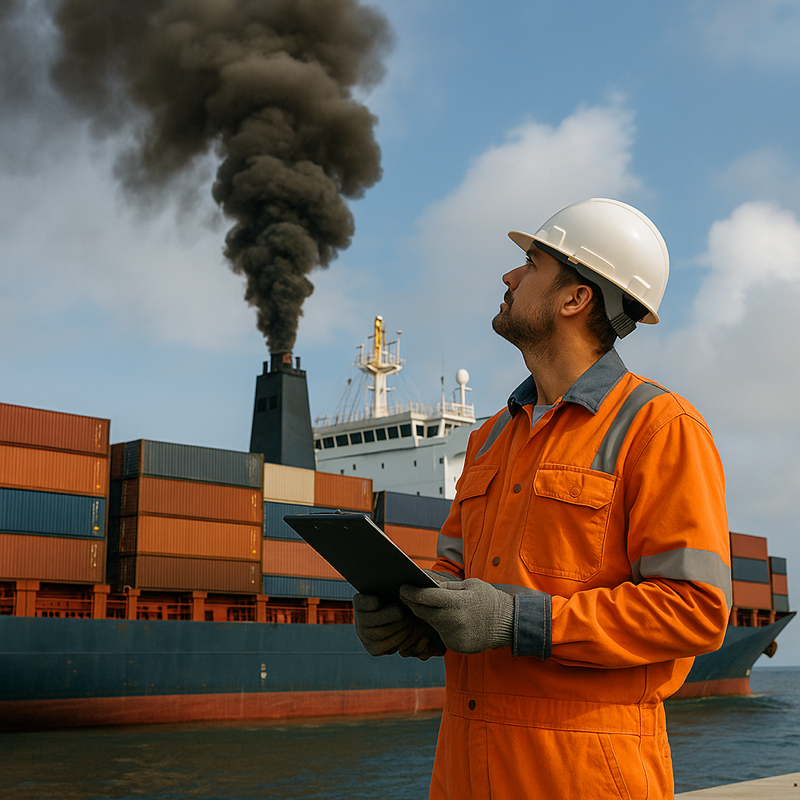Over the past several years, many organizations have invested heavily in emissions tracking and sustainability reporting infrastructure—often in anticipation of expanding regulatory requirements. Recently, however, regulators in both the United States and Europe introduced significant changes that alter the near-term compliance landscape for global companies.
These updates—from the U.S. Securities and Exchange Commission’s (SEC) revised climate disclosure rule to the European Commission’s scaled-back Corporate Sustainability Reporting Directive (CSRD)—underscore a key reality for today’s supply chain and logistics professionals: the sustainability regulatory environment is dynamic, fragmented, and evolving.
What do these developments mean for day-to-day operations? And how can businesses remain agile and resilient as they navigate these shifting expectations?
The SEC’s Scope 3 Exclusion: What Actually Happened?
In March 2024, the SEC finalized its long-anticipated climate disclosure rule, requiring many public companies to report on Scope 1 and Scope 2 emissions—those associated with direct operations and purchased energy. Notably absent from the final rule was a requirement to disclose Scope 3 emissions, which include upstream and downstream emissions across a company’s value chain.
This change followed extensive industry feedback raising concerns about the feasibility, cost, and accuracy of Scope 3 data collection. As a result, many U.S.-based companies now find themselves with more flexibility in their reporting obligations.
However, while regulatory pressure may have eased, market expectations have not. Investors, customers, and other stakeholders continue to demand transparency around supply chain emissions. Organizations that proactively measure and manage Scope 3 emissions are still likely to find competitive advantages—particularly in customer retention, supplier partnerships, and investor confidence.
The Evolving CSRD: Europe’s Shift Toward Simplification
In contrast to the SEC’s move to scale back certain disclosure requirements, the European Union’s CSRD initially represented a major expansion in sustainability reporting obligations. But in early 2025, European officials proposed significant changes: exempting companies with fewer than 1,000 employees, reducing disclosure templates by 70%, and narrowing EU Taxonomy applicability to companies with over €450 million in turnover.
These changes effectively create a two-tiered system. While direct regulatory compliance may now be limited to larger firms, suppliers to these firms—particularly in industries like automotive, consumer goods, and technology—will still be expected to provide sustainability data as part of broader value chain assessments.
For supply chain leaders, the message is clear: even without direct compliance obligations, expectations around emissions data and ESG performance are becoming embedded into broader business relationships.
Delayed Deadlines, Continued Expectations
Adding another layer of complexity, the EU has also proposed a two-year delay in the implementation of both CSRD and the Corporate Sustainability Due Diligence Directive. This delay, while offering more time to prepare, also introduces a period of strategic uncertainty.
Organizations now face a decision: pause and wait for final details to emerge, or use the extra time to develop more robust and integrated reporting systems. Forward-thinking companies are choosing the latter—leveraging this window to test systems, improve data accuracy, and align internal processes without the pressure of imminent regulatory deadlines.
Strategic Approaches in a Fragmented Regulatory Environment
Today’s regulatory developments highlight the importance of building sustainability strategies that are both flexible and scalable. Businesses that embed sustainability into their core operations—rather than approaching it as a reactive compliance task—will be best positioned to adapt to evolving requirements and market expectations.
Key areas of focus for supply chain leaders include:
- Establishing reliable, GLEC-aligned emissions baselines
- Integrating reporting systems for real-time data visibility
- Collaborating with suppliers to strengthen emissions tracking across tiers
- Monitoring global regulatory changes and adapting strategies accordingly
Turning Complexity into Capability
At Greenabl, we help organizations transform regulatory uncertainty into opportunity. Our platform equips shippers and supply chain providers with tools to accurately measure emissions, monitor compliance in real-time, and develop actionable reduction strategies aligned with both customer demands and future regulatory requirements.
Whether your company is responding to California’s SB 253, preparing for European directives, or simply aiming to meet stakeholder expectations, we provide the structure and support to build resilient sustainability frameworks that drive long-term business value.
Connect with Greenabl to learn how you can turn complexity into clarity—and stay ahead in a fast-changing sustainability landscape.


